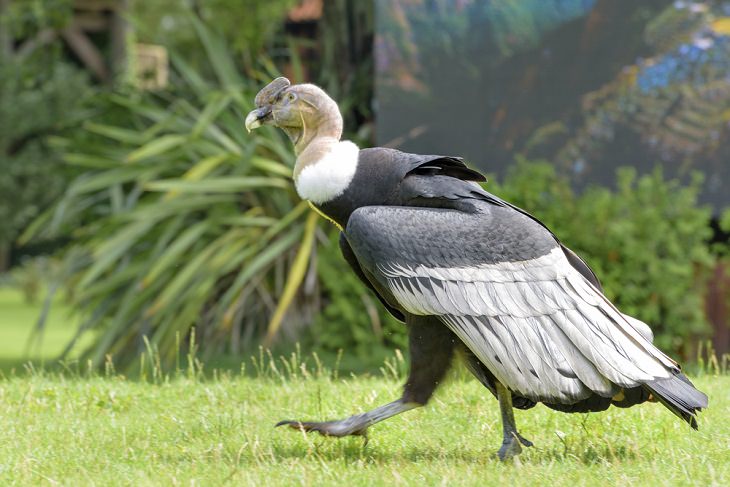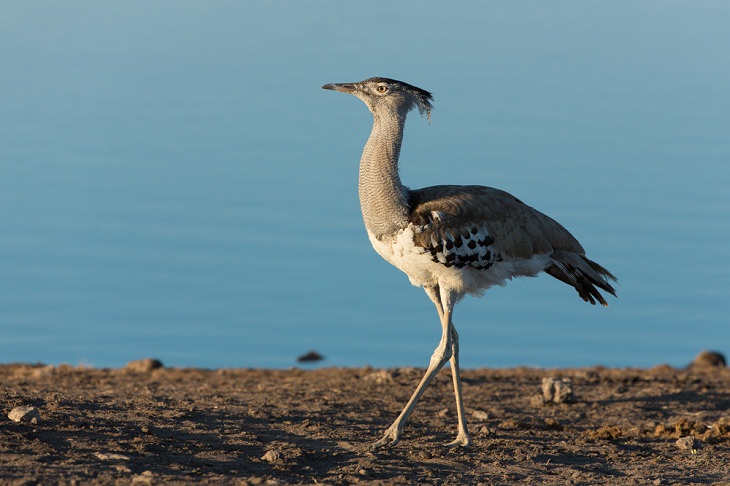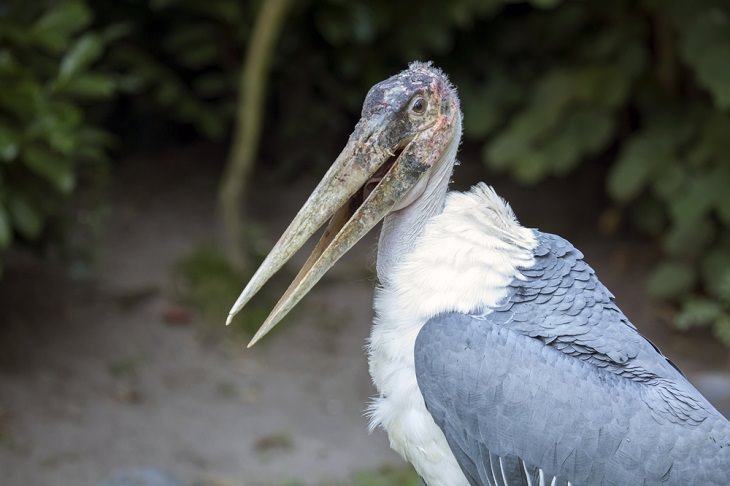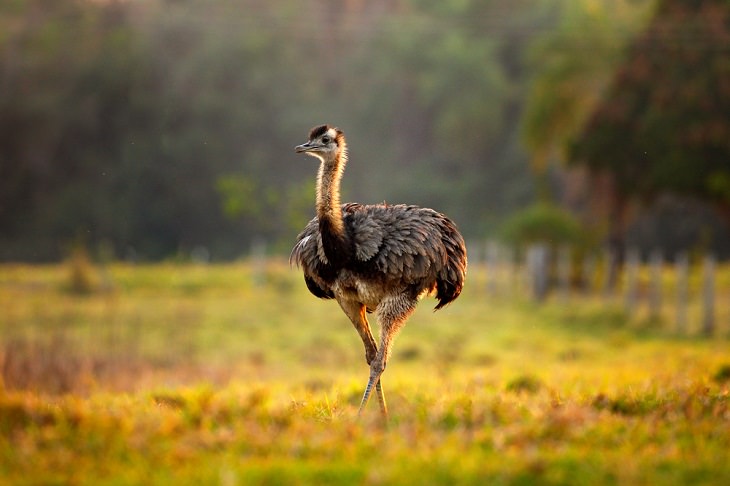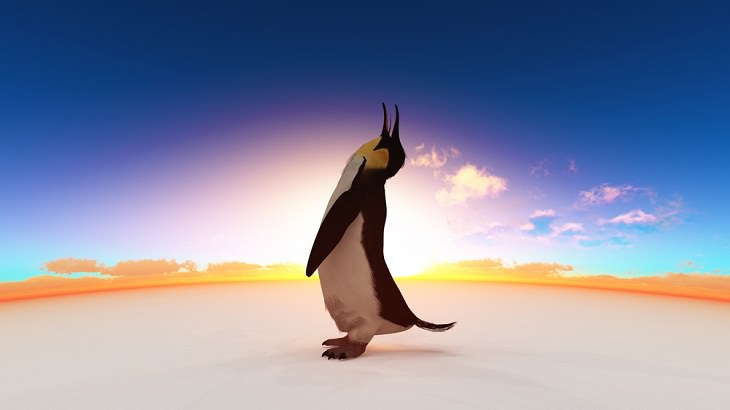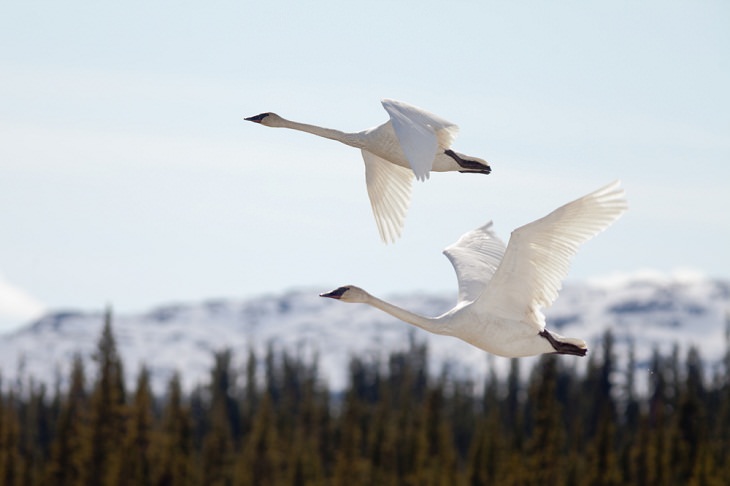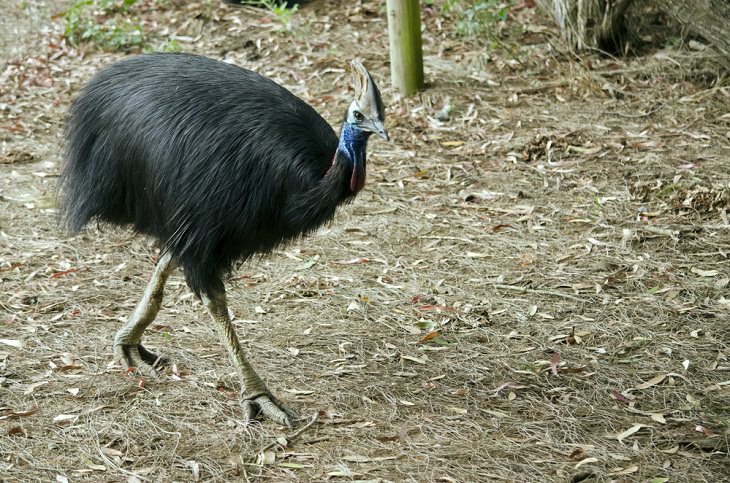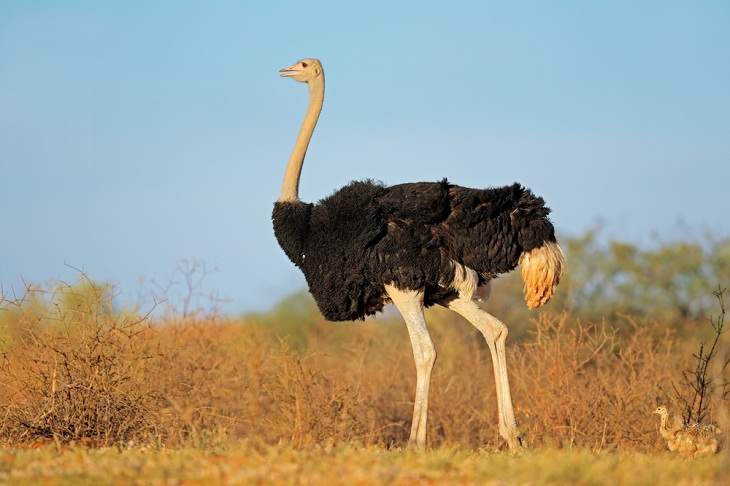Birds are beautiful creatures. Spotting a cute, little sparrow or parrot in your garden can make all of us go “Aww!”, doesn't it? Indeed, there are some delightful, colorful, and tiny birds around us that can melt anyone’s heart. But what about large birds, though? When we think of large birds, we generally tend to picture an ostrich or an emu. However, our avian friends come in all shapes and sizes and the world is filled with some remarkably large birds, many of which you might not even be aware of.
Here, we take a look at the largest living birds in the world whose size and weight are likely to leave you surprised. Interestingly, not all of them are flightless.
1. Andean Condor (Vultur gryphus) 3.3–4.3 ft long (100-130 cm)
Andean condors are massive birds, and they have the longest wingspan of any raptor. As its name suggests, these birds are native to much of the Andes Mountain range along the Pacific coast of western South America. These large scavengers can reach a weight of 11 to 15 kg (24 to 33 lb) and their overall length can range from 100 to 130 cm (3 feet 3 inches to 4 feet 3 inches). Despite being so large and heavy, these birds do soar effortlessly and are, in fact, among the largest in the world that are able to fly. These condors can often be seen soaring over open grassland areas hunting for food.
The Andean condor has the privilege of being the national bird of several South American countries including Bolivia, Chile, Colombia, and Ecuador. It is also the national symbol of Argentina, Bolivia, Chile, Colombia, Ecuador, Peru, and Venezuelan Andes states.
2. Kori bustard (Ardeotis kori) 3.5- 4.2 ft (105 - 128 cm)
The Kori bustard is native to Africa and is probably the heaviest living bird capable of flight. Male kori bustards are two times heavier than the females and have a wide wingspan (the distance from the left wingtip to the right wingtip) that can measure up to 9 ft (274.3 cm). The male can range in weight from 5.8 to 18 kg (13 to 40 lbs).
This land bird is an omnivore, eating both berries and animals like lizards and snakes. The kori bustard has a majestic walk and in spite of their size, they are remarkably strong fliers. They take off with very heavy wing beats but fly quickly and strongly once they are airborne. Today, the kori bustard is marked as ‘Near Threatened’ by the International Union for Conservation of Nature and efforts are being made to save this precious bird.
3. Wandering Albatross (Diomedea exulans) 3.6-4.5 ft (107-135 cm)
The Wandering albatross, found almost exclusively in the Southern Hemisphere, has the largest wingspan of any bird, at times reaching nearly 12 feet (3.6 m). They are also one of the most far-ranging birds in the world. While there are 22 species in the albatross family, the wandering albatross is the biggest among them.
These large birds mostly feed on small fish and squid and spend a lot of time gliding above the ocean looking for food. The wandering albatross can also travel over large distances and is known to encircle the Southern Ocean three times (covering more than 120,000 km or 75,000 miles) in one year at speeds of about 40 km per hour (24.8 mph).
4. Marabou Stork (Leptoptilos crumeniferus) 3.7-5 ft (115–152 cm)
Sometimes called the “undertaker bird” because of its Dracula-like appearance, the Marabou stork is a large wading bird in the stork family Ciconiidae that possesses the largest wingspread (the distance between the extreme tips of the wings) of any living bird. Its shape from behind - cloak-like wings and back, skinny white legs – makes it appear menacing and that is the reason why the marabou stork has attained such a sinister reputation.
Interestingly, the marabou stork also eats other birds and is one of the great scavengers of the wild. Found throughout Sub-Saharan Africa, these birds are highly social creatures and can often be seen in groups, gathering close together to roost at night.
5. Greater Rhea (Rhea americana) 4.2 - 5 ft (129 - 150 cm)
Although they look similar to ostriches, the greater rheas are much smaller. These large South American birds are found roaming the sparse woodlands of Argentina and Brazil and are also endemic to Bolivia, Paraguay, and Uruguay. Named after the Titan goddess Rhea, who gave birth to all of the Olympian gods and goddesses in Greek mythology, it is the largest of all South American birds and is related to ostriches and emus.
The greater rhea has an average weight of about 20-40 kilograms (44-88 lbs) and is the largest bird on the American continent. These flightless birds can reach a height of close to 129 - 150 cm (4.2 – 5 ft) and their long, robust legs allow them to run at a speed of up to 35 mph (56 km/h).
6. Emperor Penguin (Aptenodytes forsteri) 4.2 ft (130 cm)
The Emperor penguin is endemic to Antarctica and can stand up to a height of 130 cm (4.2 ft) while weighing about 22 to 45 kg (49 to 99 lb). It is the tallest and heaviest of all living penguin species and it lives on the Antarctic ice, surrounded by frigid waters. Amazingly, the largest penguin species ever discovered is the 'colossus penguin' (Palaeeudyptes klekowskii) which stood at 6 foot 8 inches from toe to beak tip and would have dwarfed even most humans today had it not become extinct.
Emperor penguins live most of their lives on open ice where temperatures can drop to as low as -60°C (-76°F). The magnificent flightless birds are remarkable swimmers and impressive divers – they can reach depths of over 500 m (1640 ft) and stay underwater for up to 22 minutes!
7. Trumpeter swan (Cygnus buccinator) 4.6–5.5 ft (138–165 cm)
Beautiful, elegant, and regal, the Trumpeter swan is one of the heaviest flying bird species in the world. Native to North America, these swans are the heaviest birds on the continent and also have an extremely large wingspan, which can exceed 10 feet (3 meters). The largest known male trumpeter went on to achieve a length of 183 cm (6 ft), a wingspan of 3.1 m (10 ft 2 in) and a weight of 17.2 kg (38 lbs).
Because of fierce hunting, the trumpeter swan was dragged to near extinction in the 19th and early 20th centuries. However, methodical reintroduction efforts by wildlife agencies ensured that this beautiful bird got a fresh lease of life and their population has steadily increased to more than 63,000 today.
8. Southern cassowary (Casuarius casuarius) 5.8 ft (167 cm)
The Southern cassowary is often called the most dangerous bird on Earth. Not only are they freakishly tall, reaching 5.8 feet (170 cm) in height, they weigh up to 121 pounds (55 kg). Furthermore, these birds have 5-inch claws on each foot and the innermost of their three toes bears a long dagger-like nail that can slash and gravely injure even adult humans. These birds can also sprint incredibly fast – about 50 km (31 miles) per hour.
Cassowaries are curious and have been known to attack humans, too, at times. In 2019, a 75-year-old man in Florida was attacked by his pet cassowary and the injuries were so severe that he later succumbed to them. Thus, never mess with these large and dangerous birds.
9. Emu (Dromaius novaehollandiae) 6.2 ft (189 cm)
Many think of it as a smaller, shaggier ostrich, but the Emu is the second-largest living bird by height and can reach up to 189 cm (6.2 ft) in length. Weighing between 18 and 60 kg (40-132 lbs) emus are found in the savannas, woodlands, and other forest ranges of Australia, along with New Guinea, Indonesia, Solomon Islands, and the Philippines. This flightless bird has small wings but has long, powerful legs that allow it to dash at about 30 miles (50 kilometers) per hour.
Emus are members of the ratite family (a diverse group of flightless and mostly large and long-legged birds) which also includes ostriches, cassowaries, and rheas. These birds are also known for producing unique-looking emerald-green eggs that resemble giant avocados.
10. Ostrich (Struthio camelus) 7-9 ft (213.3 - 274.3 cm)
It is well-known now that the ostrich is the world’s biggest bird, weighing an average of 156.8 kg (346 lb) and standing 7-9 (2.1 - 2.7m) feet tall. Native to Africa, ostriches have large, robust legs and can sprint up to 70 km/h (43 mph). They are great runners and are capable of maintaining a pace of 30 mph for 10 miles (16 km)! However, you wouldn’t want to corner an ostrich. It can deliver dangerous and powerful kicks that can even kill lions and other large predators. These birds are uniquely two-toed, with the main toe developed almost as a hoof.
Ostriches usually live in groups that contain 10 to 50 birds and thrive in the dry, hot savannas and woodlands of Africa. Interestingly, these large birds once found all over Asia, Africa, and the Arabian Peninsula but excessive hunting brought their numbers down significantly. Their numbers are still declining today, though most ostrich subspecies are not endangered.
Share this post with someone who loves birds!

